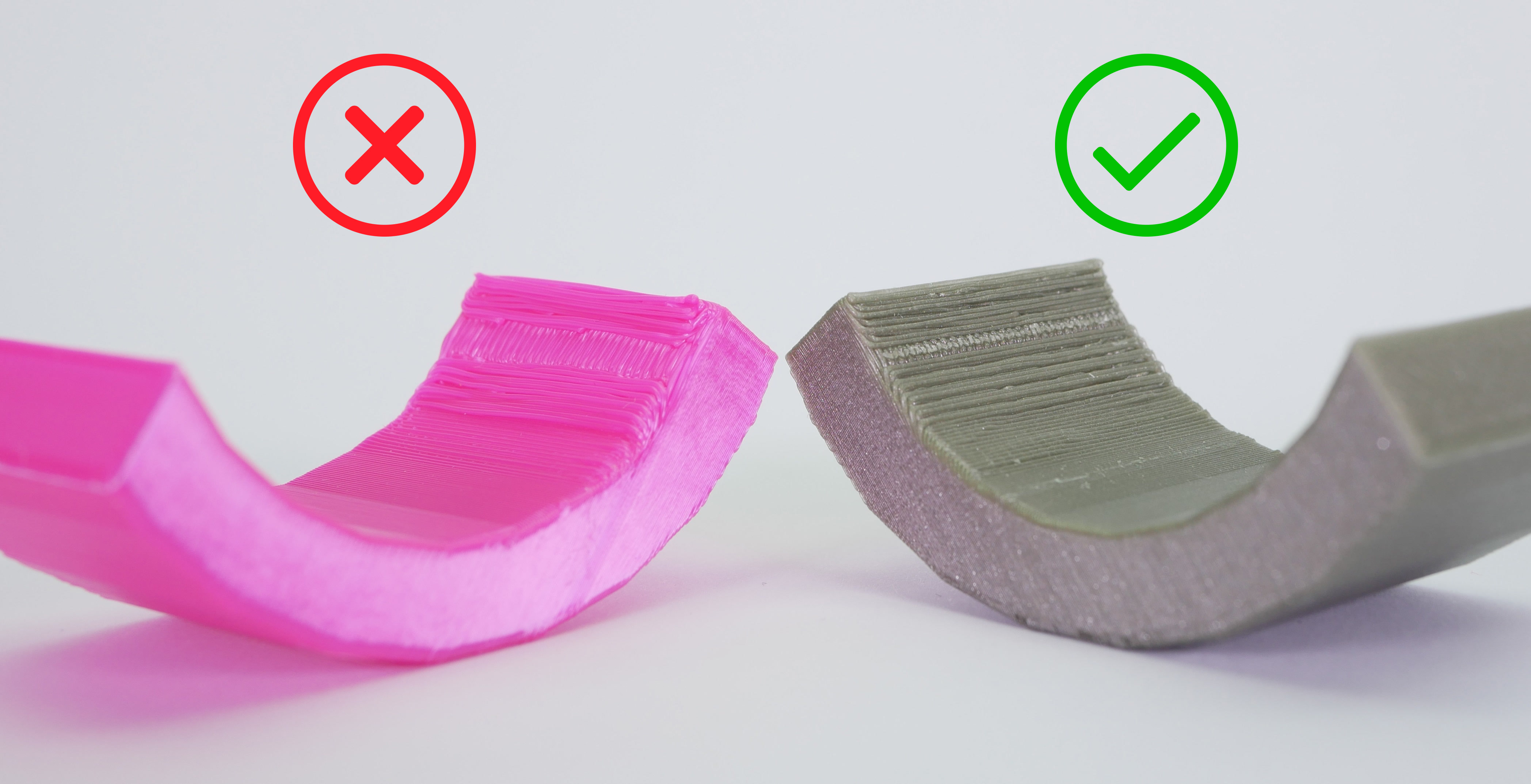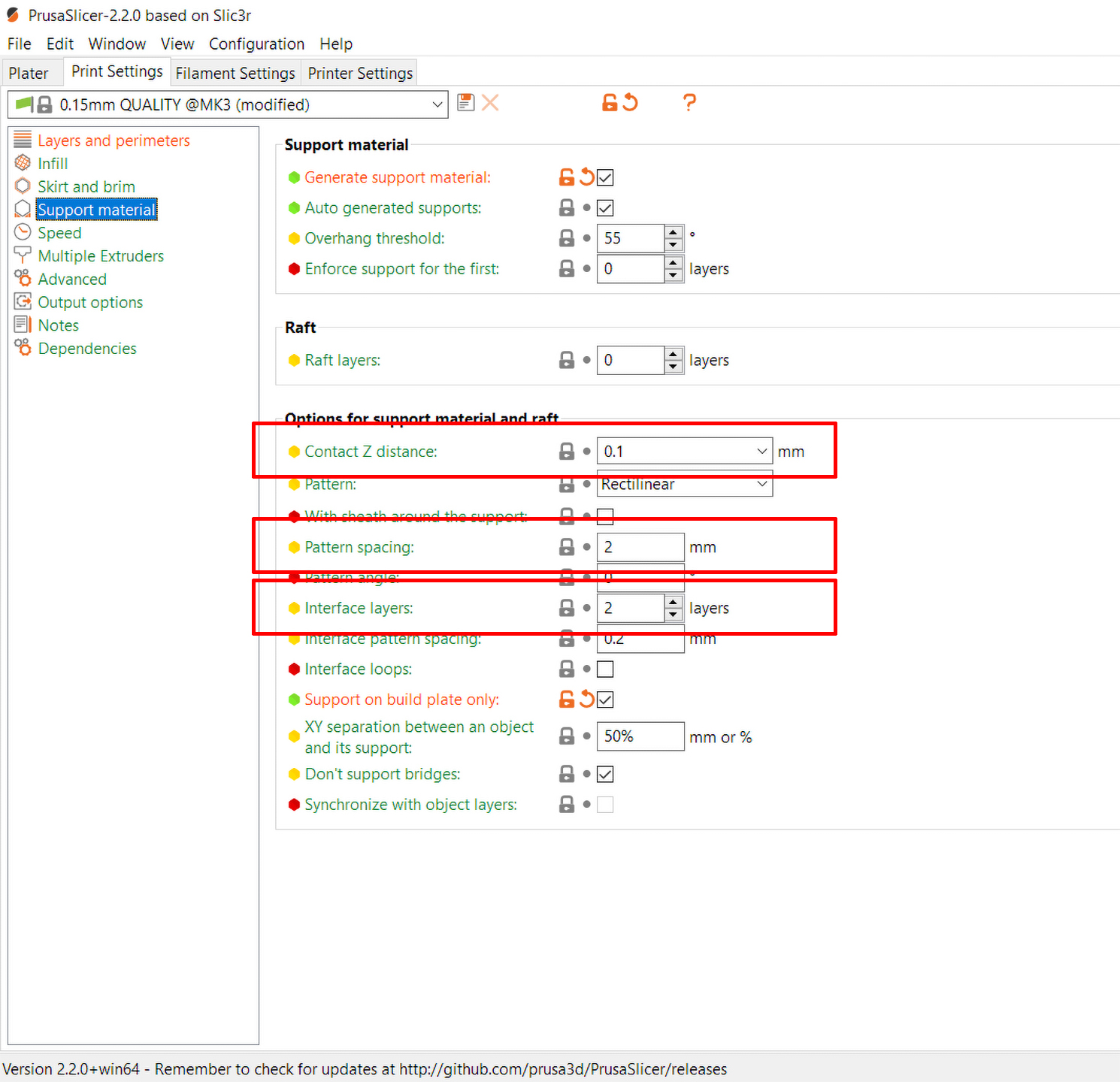Generally speaking, it’s always the best option to rotate the object in such a way that the supports are not needed at all. However, if you need to print complex objects, you will end up using supports anyway. After you remove the support structure, you may notice that the surface above the supports looks worse than the rest of the print.

The picture above shows the artifacts that can appear if print settings are not optimal
How to fix bad looking surface above supports
Again, try to rotate the object in PrusaSlicer and find a better orientation that would require fewer supports.
You may also consider using the Cut tool, to print two parts more easily, which you then glue together.
Support settings
In order to make the supports easier to break off from the printed object, a small gap is left between the support and the object’s surface. If you decrease the gap, you may get better results, but the supports may be more difficult to remove.
You can tweak the values for supports in PrusaSlicer, section Print Settings – Support material. Try fine-tuning Contact Z and Decrease pattern spacing to improve the quality of the surface.
Another good thing to try is to increase the number of interface layers to 3-4. You will have a more solid top-surface of your support, which can also make the contact-point of the support easier to remove.

3 comments
I have terrific trouble with supports. Either it sticks or droops.
I believe the problem is with cooling. I tend to use minimal fan in order to maximise layer adhesion - also a big problem in my mainly structural parts.
PrusaSlicer needs to consider support as being just like a bridge and to enable full fan for the support contact layer - ie the 'Interface' layers, and for perimeters with vertical proximity to support.
Increasing fan to full for outer perimeters would also increase the integrity of steep overhangs.
Is there a way to do this in gcode?
The surfaces above supports are regarded as bridges. Make sure that the Detect bridging perimeters option is checked, and you should be able to increase the fan speed of the surfaces above supports on the Cooling menu in the Filament settings. Note that this has material limitations. In case you have a very specific case, please send the model for our customer support for further clarification.
I guess you cannot post a snapshot of the settings. This needs to be rectified...
https://drive.google.com/file/d/1qGMLwk9xwEhdZnN2PXPn72SbwXGfmP8C/view?usp=sharing